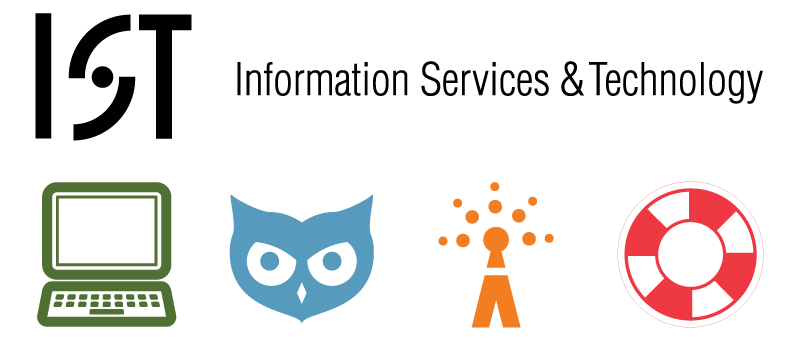
Friday, October 9, 2009
Classroom of the Future
Malcolm Brown, EDUCAUSE
- Future of higher ed is outside the classroom
- Vs
- The classroom is the center of learning
Question the validity of predictions search of "classroom of the future"
Things go stale very fast.
Check out Clay Shirky - thinking the unthinkable
- In times of revolution, even the revolutionaries can't predict what will stick
Students - EDUCAUSE Stats
- Desktops down 71% to 44%
- Laptops up from 65% to 88%
- More than 90% use
- Library web site
- Presentation software
- Social networking sites
- Text messaging
- Within a year 63% will have smartphones
Facebook is 4th most populous nation in the country.
Learning Spaces:
- Formal - classroom
- Informal
- Virtual
Drivers
- Technology
- Constructivism
- Ubiquity of internet
New Drivers
- Mobile Technology
- Cloud tech
- NetGens - students showing up as faculty now
- Read/write web (culture it has spawned)
- Way to comment and review comments
- Way to comment and review comments
Now thinking of whole campus as Learning Environment (one learning network including the Starbucks)
Key elements of an environment
- Sense of place and purpose
- Anywhere anytime any place
- Mix of planned and unplanned
- Range of participants, systems and forces
- Dynamic flux of roles
Personal Technology
Internet Technology
Campus Technology
The classroom is no longer a box.
New classroom is read/write.
Several samples of classrooms, both old MIT and modern TEAL.
Classroom
- Participatory
- Unpredictable
Fiscal pressure pushes towards larger class sizes.
Teaching schedules are a challenge, faculty don't want to teach at 9am.
Trends
- Human factors
- When display is close, more participation and interaction (put it in their hands)
- Verbs, not nouns (not putting a bunch of gear in there)
- Connect, build, discuss, annotate, analyze and design (supported by the stuff)
- Community Infrastructure
- Multipurpose Rooms
- Studio, critique, lecture
- Participation enabling designs
- Tech Outfitting
- Presentation capture
- Video conferencing
- Display technology
Challenges
- Design - good design
- Hard to find
- Avoid making classrooms look like cockpit of 747 (which switch to start with)
- The Design of Everyday Things by Donald A. Norman
- By looking the user can tell state alternative actions
- Good conceptual mode - consistency in the presentation
- Good mapping - possible to determine relationship between actions and results (row of lots of light switches)
- Feedback - full and continuous feedback about results
- Perceptions
- No kindergarten classrooms - Stanford professor about TEAL
- Costs
- Support
- Gear
- Operational
- Real time support
- Effective pedagogy
- Community design, planning etc.
- Distractions
- Totally a challenge
- Assessment
- It is expensive and tough
- It is expensive and tough
Human factors
- When display is close, more participation and interaction (put it in their hands)
Andrew Milne, Tidebreak, Inc.
Learning Spaces 3.0 Design for Interaction
Constrained by palette of technologies we have available
Architects and Technologists don't speak the same language, they do share a vocabulary
We are cleverness limited
Collaborative Learning
- Interaction
- With information
- With each other
- Graphical vs Tangible interaction
- Individual vs Group User
- The six second rule - idea fragments last for 6.4 seconds
Best First 10 minutes (Biology class example)
- Building a learning community
- Establish collaborative pattern of behvaior
- Reviewed prerequisite material
- Assessing student knowledge
- Student led discussion/ peer participation
- Fluid technology - marker
- Built content instead of just delivering it
The purposeful structuring of experiences from which students cannot escape without learning…
Can we get multiple mobile devices to simultaneously display on one screen? (idea that occurred during session, not a speaker comment)
Space vs Place
- Space is physical object
- Place is layering something happening on it
Codesign physical and virtual spaces.
ELI has a 20 question photo survey that we can use for students.
Treat students as customers, give a significant voice
Define the problem well.
- What are critical functions
- Prototype it
The permanently unfinished classroom.
Designing a classroom of the future 6-8 person study room:
Key Features:
- reconfigurable seating for 6-8
- big eye level displays when seatting
- plain white board (use camera phones to capture as necessary)
- bright color
- low technology footprint
- located in an already existing gathering space (like Library)
- sound proofed
- easy interface for displays (cable coming out of the wall)
- small PC (maybe Mac Mini) in corner for general web access and DVD playing
- room needs to be scheduleable